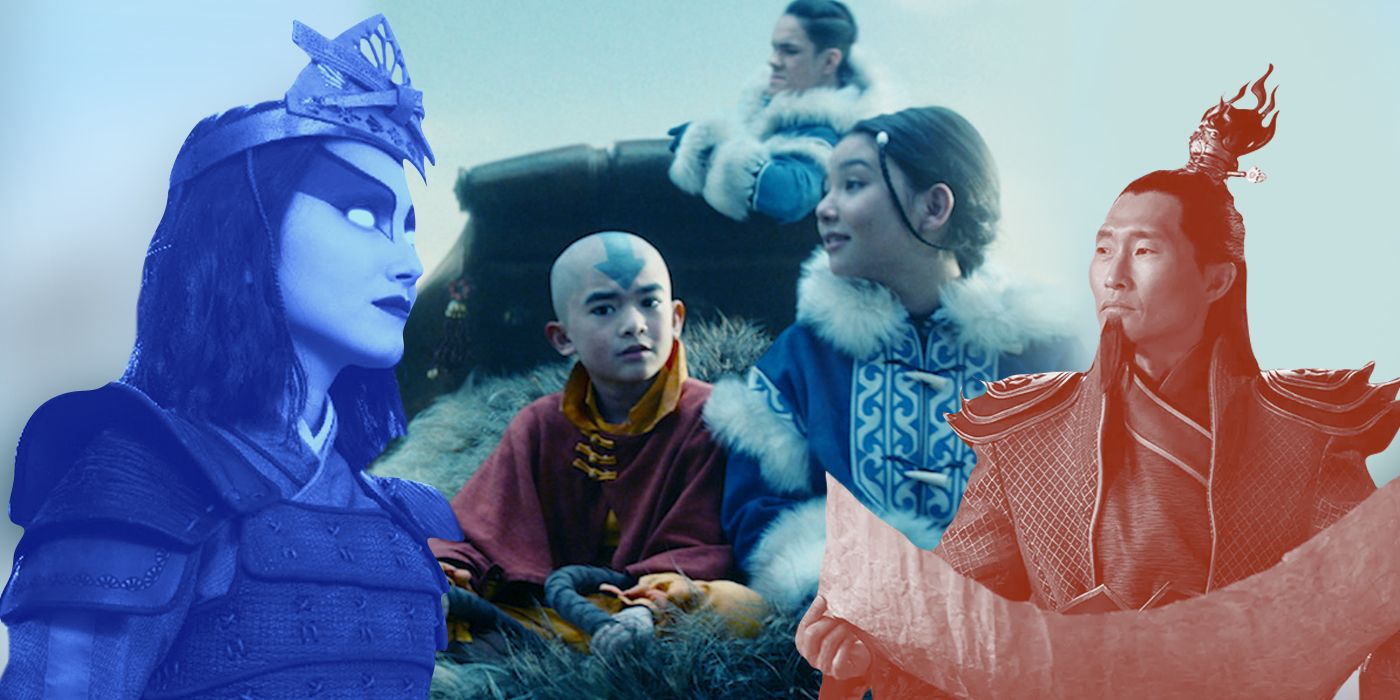A popular fan belief about a previous Avatar is proved true in Netflix’s live-action adaptation.

First airing in 2005 on Nickelodeon, Avatar: The Last Airbender quickly became one of the most popular and highest-rated children’s TV shows of all time. Still, nearly 14 years later, the show has a devout cult following, with hardcore fans finding time for endless re-watches in the modern age of streaming. As with any popular franchise, the limited quantity of content is guaranteed to encourage fans to fill in the gaps about smaller characters in the series. And, as Avatar: The Last Airbender only shows brief glimpses from before Aang’s time, there is a lot of canonical history for fans to lose themselves conspiring about.
Making numerous changes to the original show, including a much darker tone, storytelling structure, narrative chronology, and reworking of characters, fans of the original series were mostly disappointed with Netflix’s recent adaptation of the beloved series. That being said, there were small details that Netflix included as a nod to fans. Small easter eggs were scattered across the show, but much grander in scale was a fan theory about a popular character.
Netflix’s Avatar Confirmed that Kyoshi Is as Brutal as Fans Believe
Aang is just the latest in a long line of Avatars. Over the previous 81 iterations, the most popular of the past Avatars in the fandom is Avatar Kyoshi, the Earthbending Avatar two generations before Aang’s time. Kyoshi makes her first appearance in Netflix’s Avatar: The Last Airbender fairly quickly, debuting in the second episode, titled ‘Warriors.’ Avatar Kyoshi is an imposing figure, standing well over 6 feet tall, and her penchant for violence and swift justice has made her the center of a hilarious fan theory/belief, with fans concluding that the Avatar loved violence as an answer.
The episode saw Aang, Katara, and Sokka travel to Kyoshi Island so Aang could learn to control the power of his Avatar state after nearly killing Katara and Sokka at the Southern Air Temple. When Aang speaks to the spirit of Kyoshi at her shrine on the island, it draws the attention of General Zhao and a squad of Firebenders, who follow the signal and attack the island.
Unable to defend the island himself, Aang’s body is taken over by the spirit of Kyoshi, who enters the Avatar state and mercilessly dispatches the Fire Nation soldiers. Netflix’s series unintentionally confirmed this when Kyoshi is shown brutally eliminating Fire Nation soldiers on her island by picking them up in a whirlwind and setting the twister ablaze, burning all Firebenders to a crisp without a shred of remorse.
Furthermore, the advice that the spirit of Kyoshi gives Avatar during his meditations doesn’t help the character’s case. Kyoshi was always headstrong in the original show, telling Aang that he needed to be able to make swift decisions and deliver justice, but the Kyoshi of Netflix’s universe takes it a step further. During his meditation, Aang is told by Kyoshi that he must master the Avatar state because it is the “ultimate weapon.” She then delivers a heavy quote to Aang, saying that being the Avatar means “…being a warrior. A mighty, merciless warrior.”
The Theory Is Wrong, But Fans Don’t Care
Avatar: The Last Airbender fans love to joke that Avatar Kyoshi is the most violent and merciless of all the Avatars. The joke originated from an episode in Book 2 from the original show, titled ‘Avatar Day,’ which saw Team Avatar forced to solve a centuries-old murder committed by Kyoshi. The murder in question involved Kyoshi killing Chin the Conqueror, a brutal Earthbending dictator whom the villagers mistook as a great leader. To prove Aang’s innocence, the spirit of Kyoshi takes control of his body and explains the true events, detailing how she created Kyoshi Island to escape Chin and murdered the Conqueror by crumbling the cliff’s edge beneath his feet. The complete lack of remorse or attempt to find a peaceful solution led to the popular fan theory that Kyoshi favored violence as a go-to solution.
What makes the fan theory even more hilarious is that it is proven wrong by other canonical works within the original Avatar: The Last Airbender universe. A prequel novel centered around Avatar Kyoshi and aptly titled ‘The Rise of Kyoshi’ is essentially a biography of Kyoshi’s rise from an abandoned orphan to one of the strongest Avatars in the history of the franchise. A key plot line in the book involved Kyoshi’s overt objection to violence of any kind, to the extent that she refused to even use her own Earthbending powers out of fear of hurting someone. Of course, this couldn’t last as Kyoshi later found out she was the Avatar and was thrust into solving the ongoing war with the ‘Fifth Kingdom’ – a group of pirates from multi-ethnic backgrounds who disagreed with the segregation of the Four Nations.
While it doesn’t drastically change any major plot threads or key moments of Netflix’s Avatar: The Last Airbender, nor does it save the show from its own desire to make unnecessary changes, small details like these are crucial to engaging long-time fans. Although they may seem insignificant and sometimes unintentional, they showcase an understanding of the source material and the attitudes and opinions of the fan base, which Netflix will need if they hope to maintain viewers going into potential future seasons. Avatar: The Last Airbender is streaming now on Netflix.





